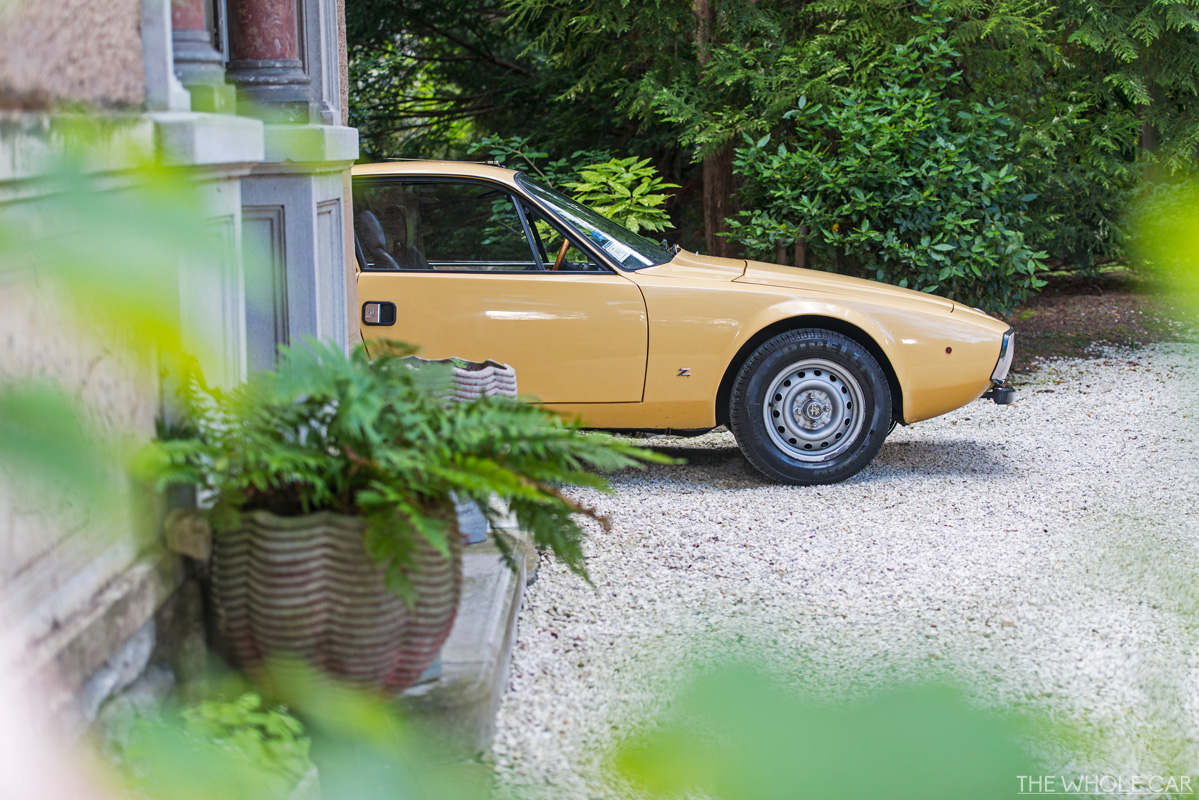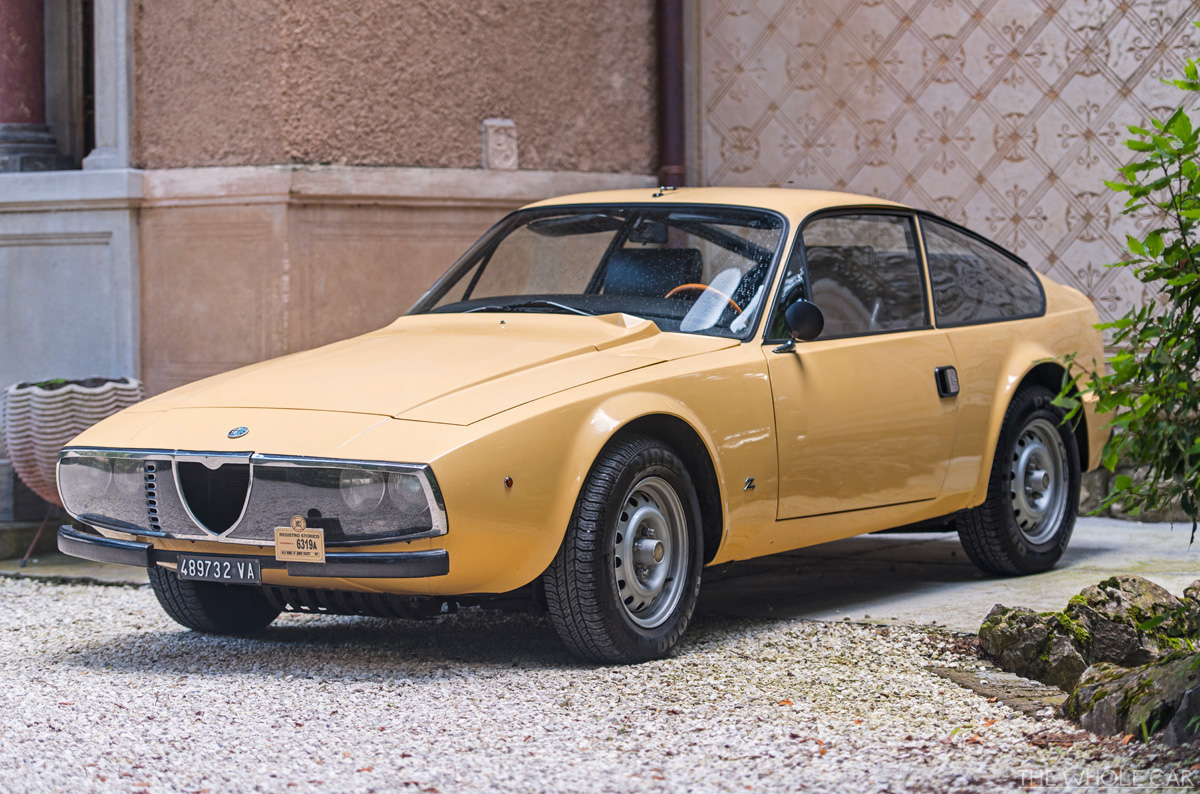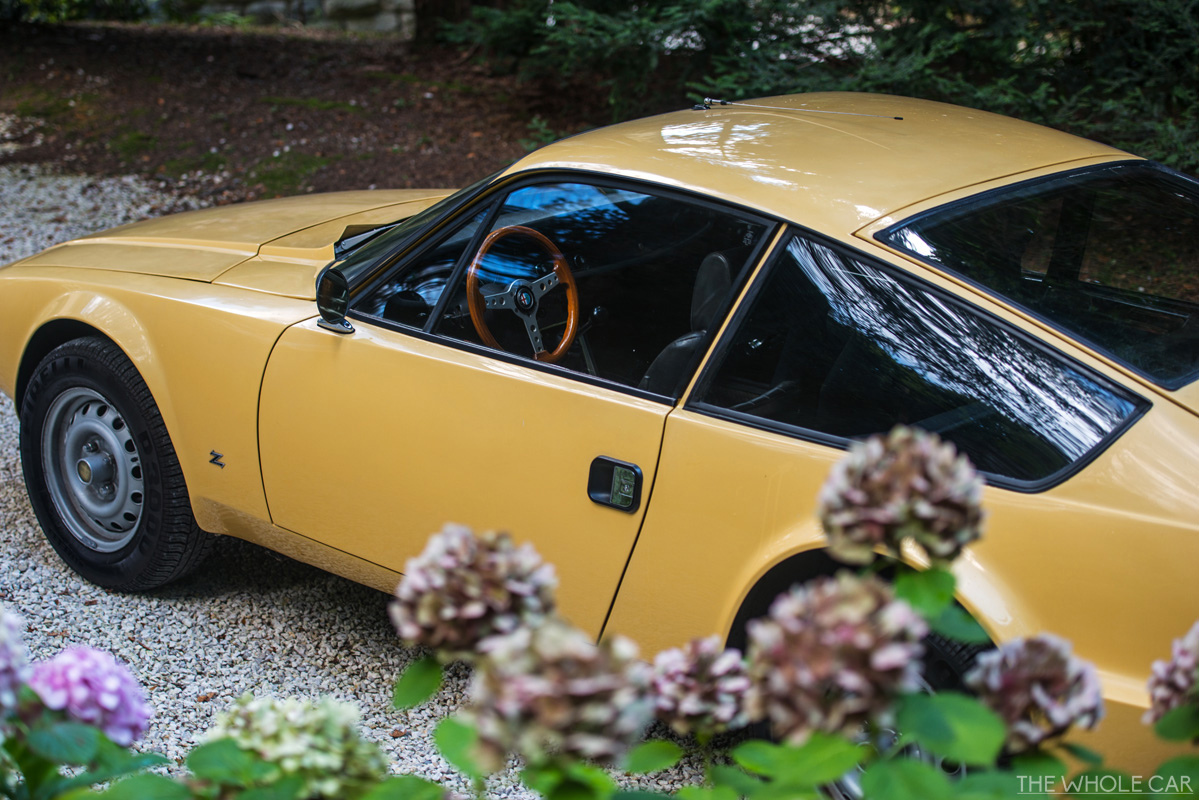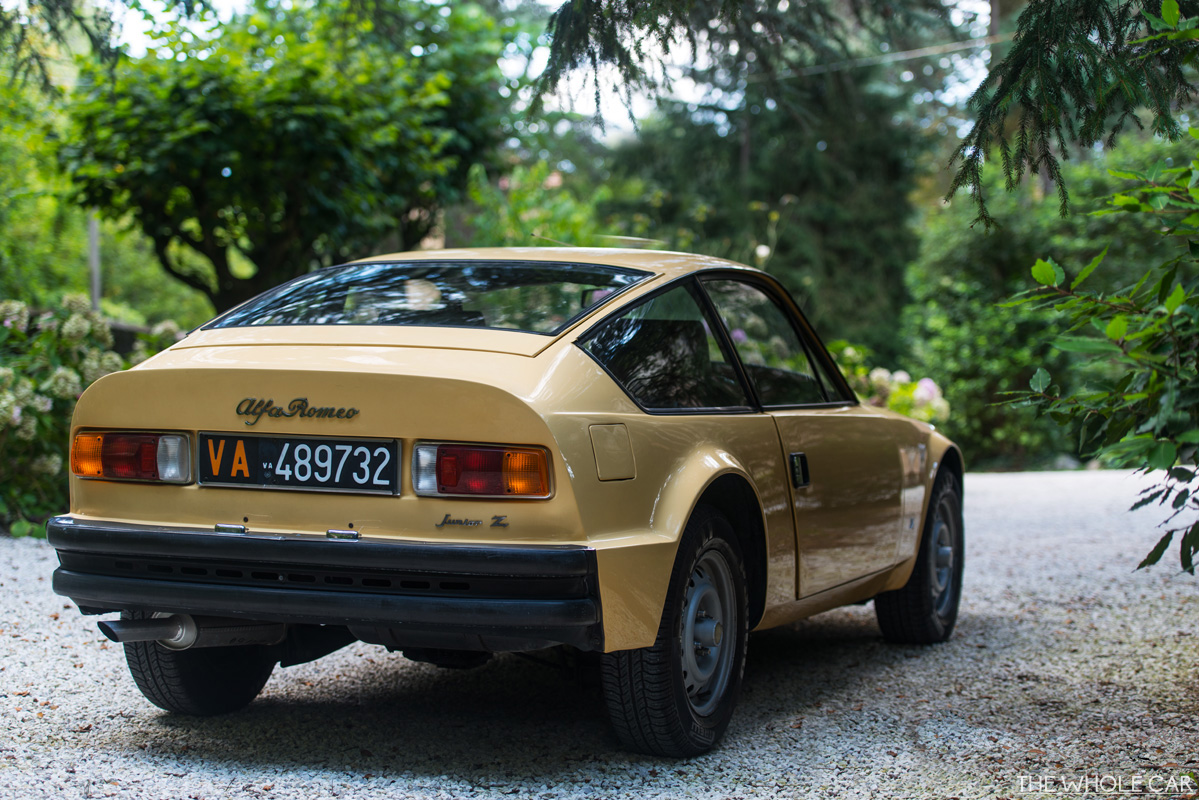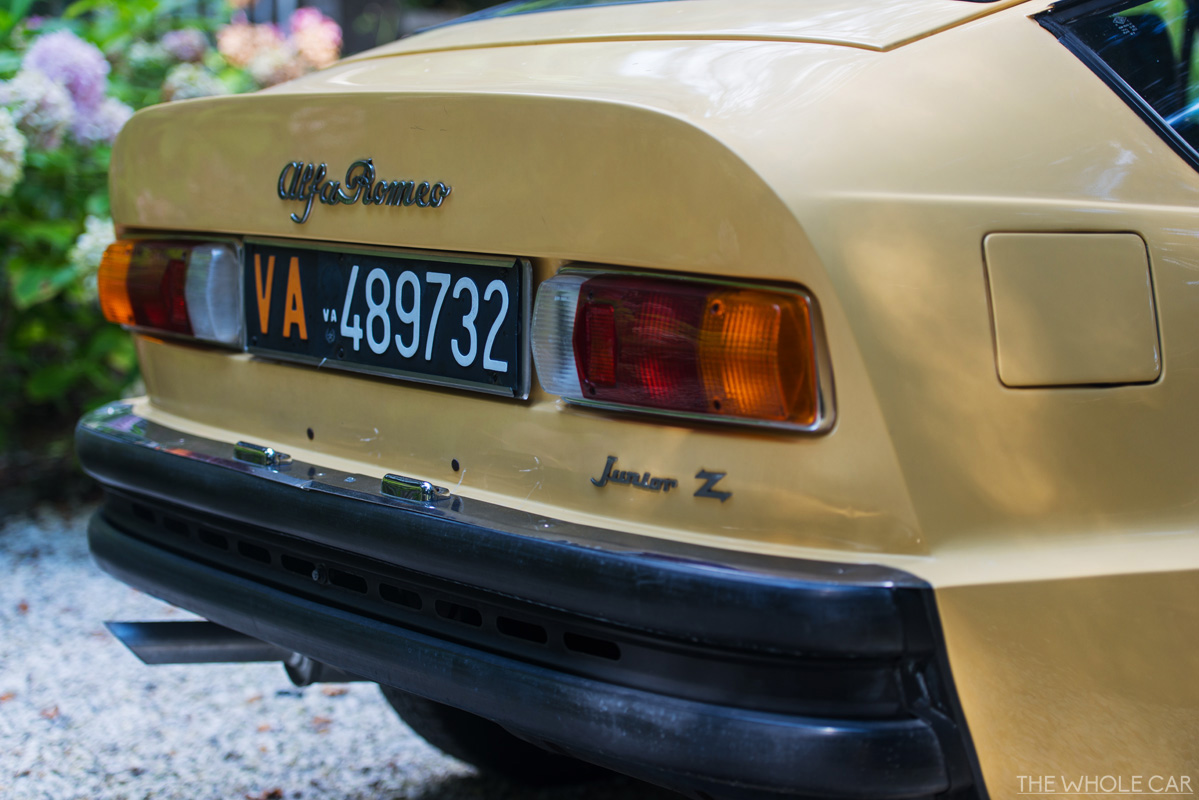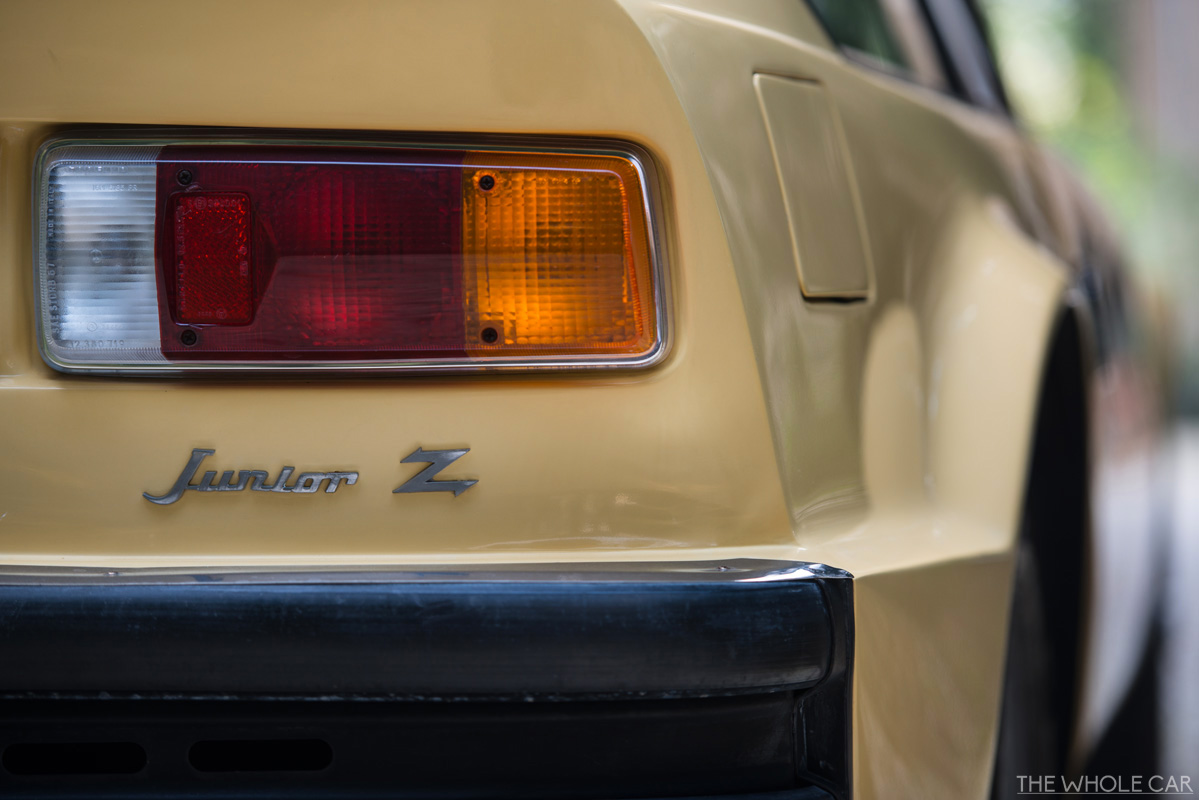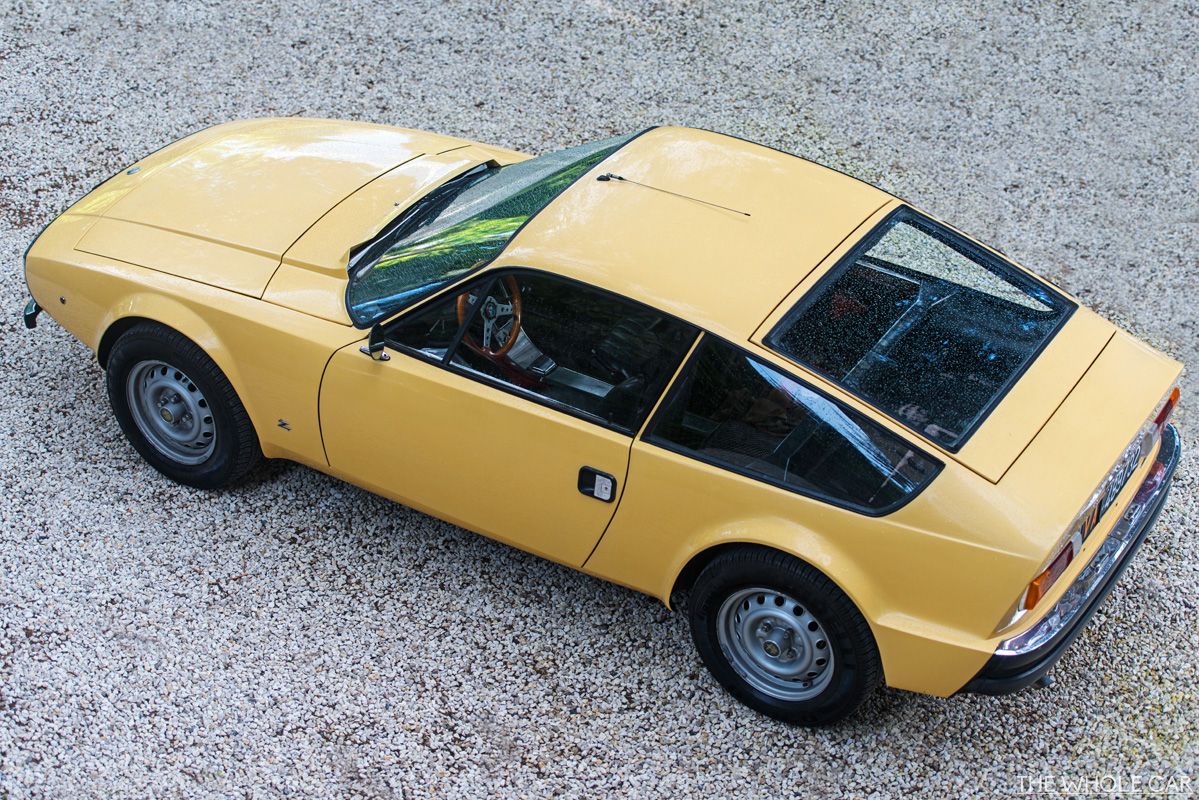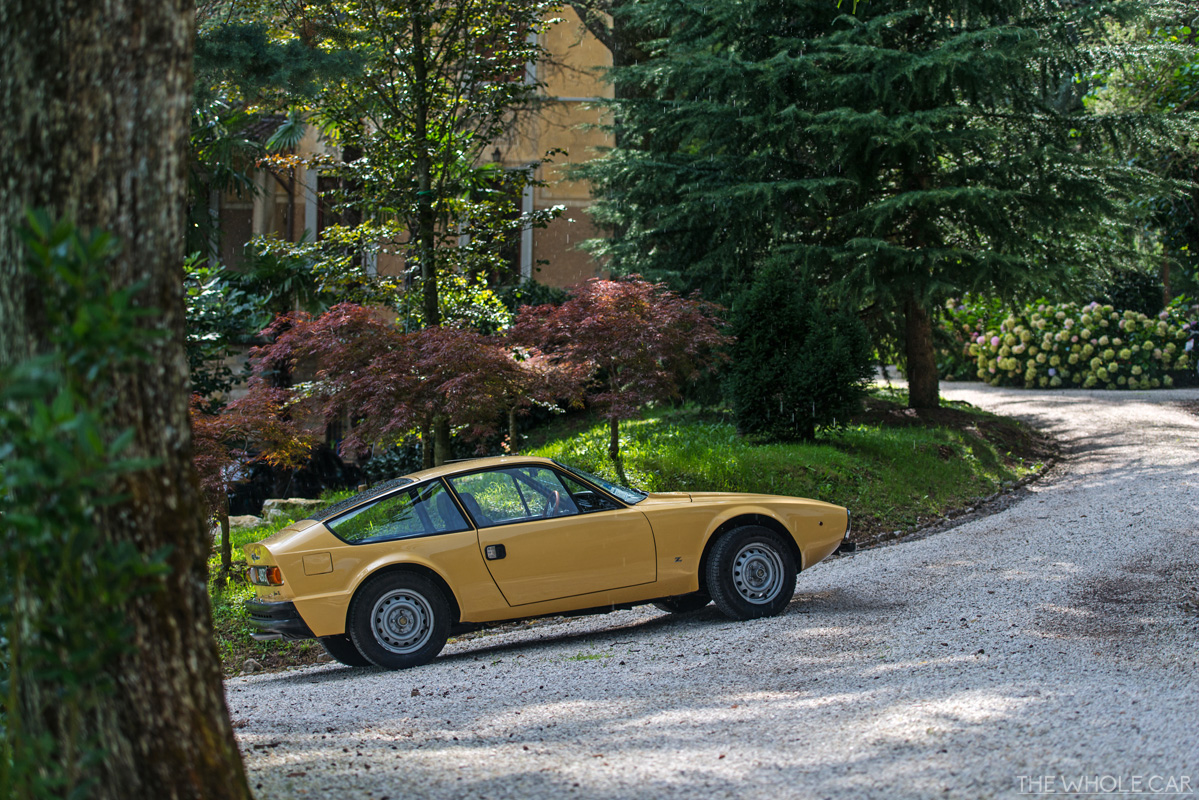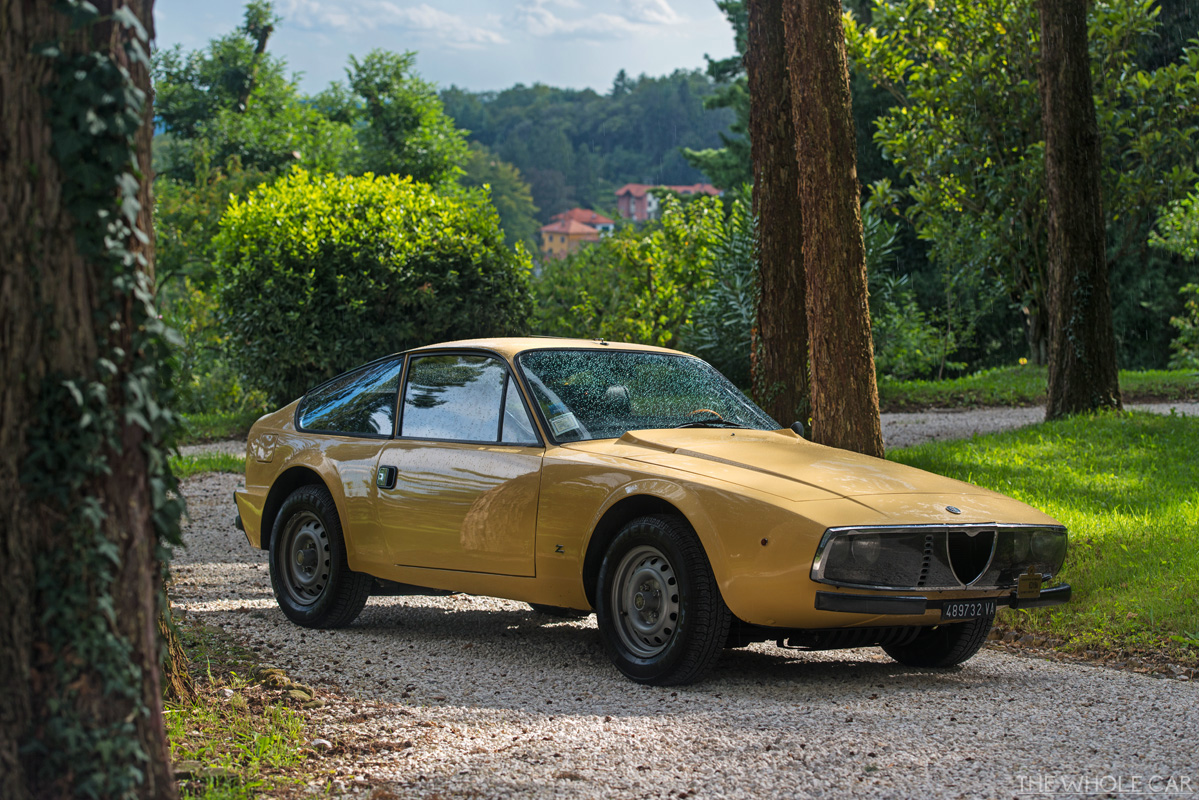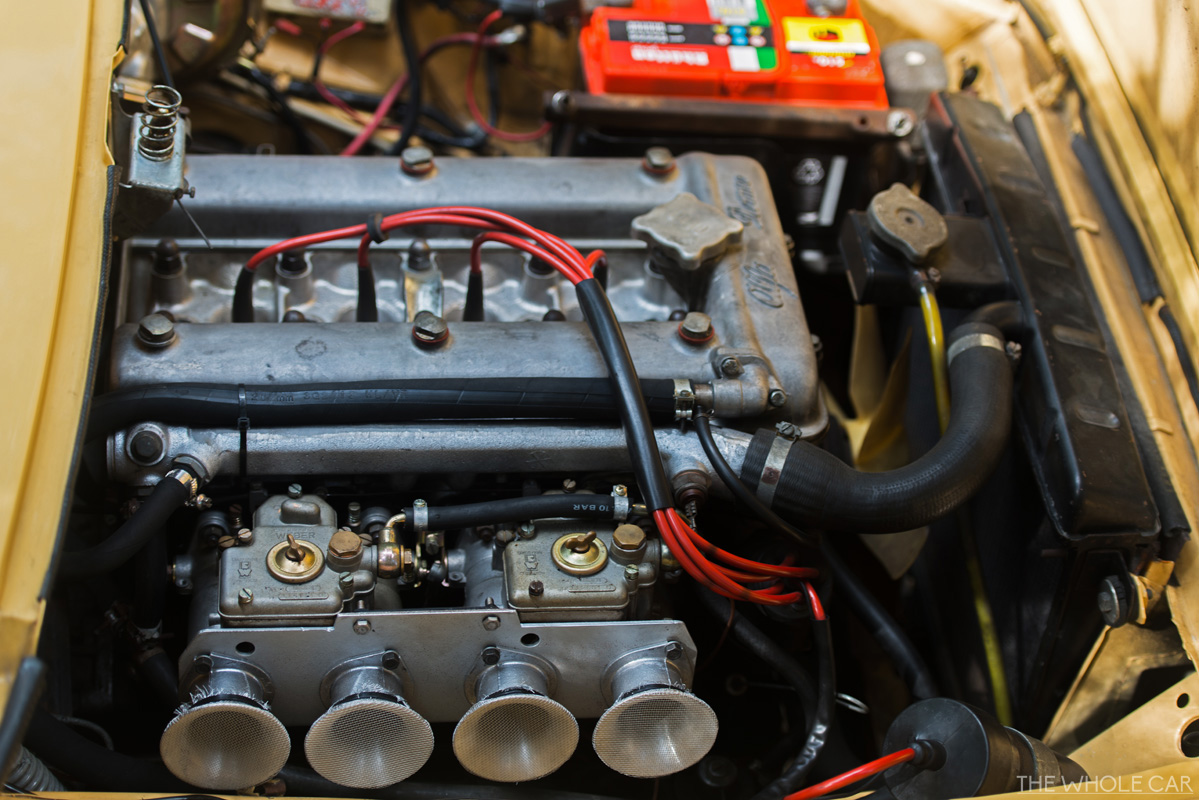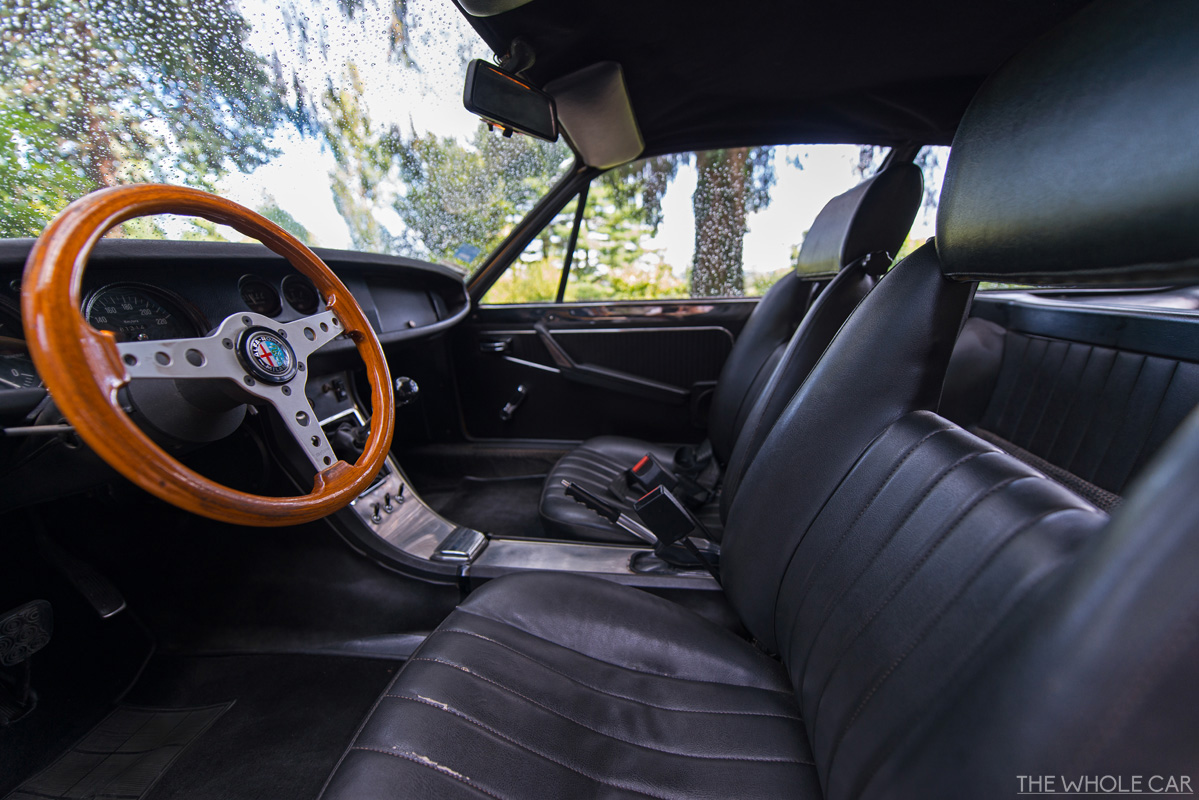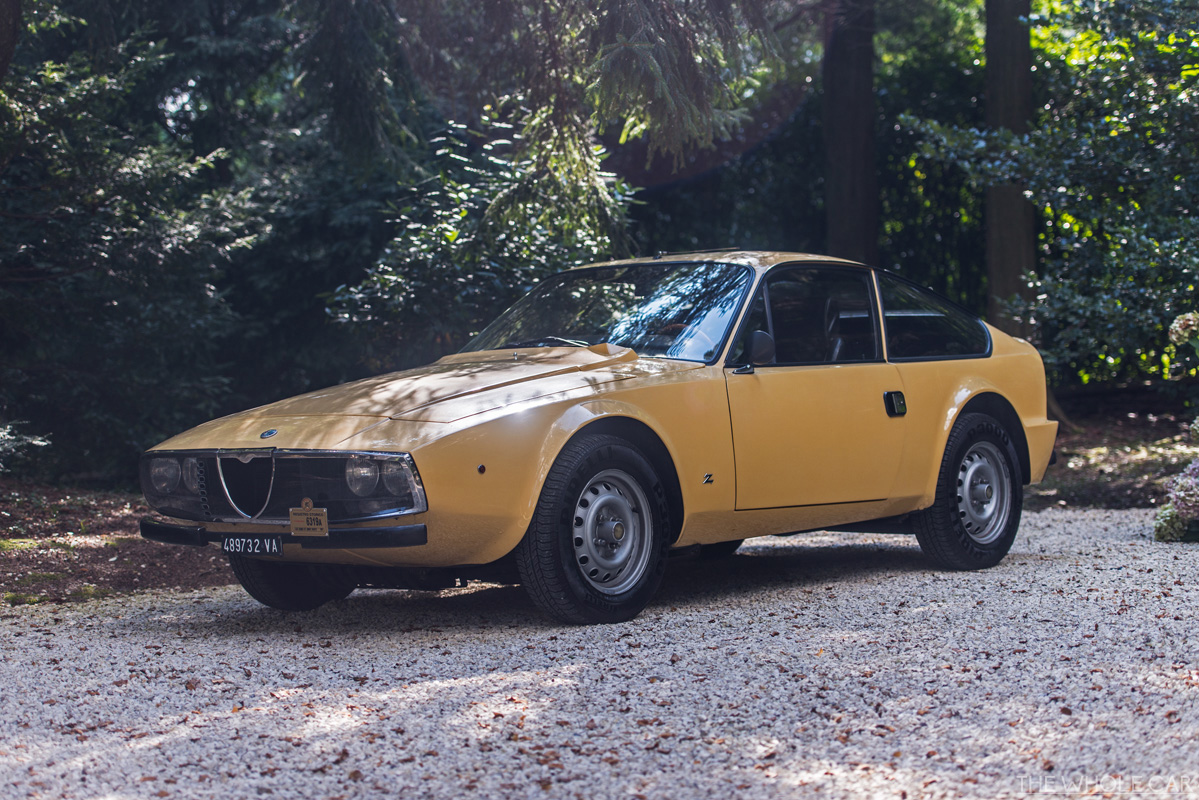1973 ALFA ROMEO GT 1300 JUNIOR ZAGATO
WORDS & PHOTOGRAPHY BY SAMUEL CUTHBERT FOR THE WHOLE CAR
I normally make an effort to provide some variety in my posts here, but I'll make an exception today with my second Alfa Romeo post in a row. In my defence, most of you here know I love the marque's classic offerings so I hope you'll understand, but there is another reason I wanted to post this today. This shoot was my first try at producing some original content in our format. Aside from a weekend of shooting the 2014 Concorso D'Elegance at Villa D'Este, I'd never shot cars before, preferring to use photography strictly to remember and share my travels. I found it to be frustrating, exhilarating, and great fun.
At the time of writing, I've now shot eight cars. Looking back this, at my first attempt, I'm glad to say that I have improved noticeably, learning the craft as I go. I have learnt about light, locations, reflections, time constraints, unpredictable weather, working with people who do not share a language, and lately, shooting on the move with rolling shots. This first album saw me given 90 minutes to complete a shoot, and I couldn't capture all the angles I wished, especially as it started raining as soon as the owner arrived at my friend Gabriele's home in Italy. The result is not something I'm totally satisfied with, but there are a few nice images in there, and I hope you enjoy a look at a pretty rare and interesting car. These sorts of vehicles are my passion and I'm sure that I'll enjoy the process of sharing them with you all.
The car featured in the album is based on Alfa Romeo's entry level coupe - The GT Junior. Introduced in 1965 and enjoying a production run until 1977, the GT Junior ran either a 1.3-liter or 1.6-liter version of the legendary twin-cam engine that Alfa Romeo used throughout the entire 105/115 series. This four-cylinder engine featured all light-alloy construction with two valves per cyclinder and a twin carburettor setup that produced a wonderfully evocative sound that is now iconic to Alfa Romeos of that era. The GT Junior range aimed to provide a lightweight (around 2,100lbs) and sporting design with handling to match - but with a modest power output, using these smaller capacity engines. Italian tax laws at the time were the reason for this strategy, taxing drivers heavily based on the capacity of their engines. The GT Junior range was a huge success as a result and a fantastic car that was affordable to run for your average driving enthusiast.
Then Zagato came into the mix. I'm sure you are familiar with the famous coachbuilder from Milan. Producing designs for all the major Italian manufacturers, their reputation was built on a reputation for racing and aerodynamic enhancements, and often in limited production runs. Given the focus of the GT Junior as an entry level coupe, racing was clearly not the focus here, instead, designer Ercole Spada created a dramatically different bodyshell for the GT Junior that focused entirely on aerodynamic changes. The dramatically sloping roofline that terminates at the higher and near vertical rear, the perspex cover over the headlights, and those wafer-thin pillars are some of the more striking changes that transform the car into a seemingly all-new design. Built for just three years between 1969 and 1972, the 1300 Junior Zagato ended production with a total of 1108 units produced, and will undoubtedly be remembered for its non-conformist design.
Of the dozen or so people I've shown the photos to so far, only two preferred the design to the GT Junior it was based on, so it's clearly not everyone's cup of tea. In person though, it felt a bit special, sounded fantastic, and felt alive and agile to drive on the brief run I enjoyed in it. Given the rare nature of the car and the fact that it is just so different, I thoroughly enjoyed the chance to get to know it, and for the record - I enjoy the unconventional looks. At around 100hp, with a 0-60mph that would see it soundly outpaced by any modern coupe, its clearly not for drivers looking for performance, but I did not miss that aspect at all - and the owner of the car (roughly translated) felt similarly. "For sure, she is not so fast, but the sound always makes me smile. I think she just gives people a greater chance to appreciate her as we drive by".
Given its rarity, there is not much in terms of high quality video to show you, but the Dutch group at CineCars filmed some nice footage here, and (if you don't mind the lack of English spoken) it gives a good look at the near identical 1600 Junior Zagato, and some audio of that lovely twin-cam.


